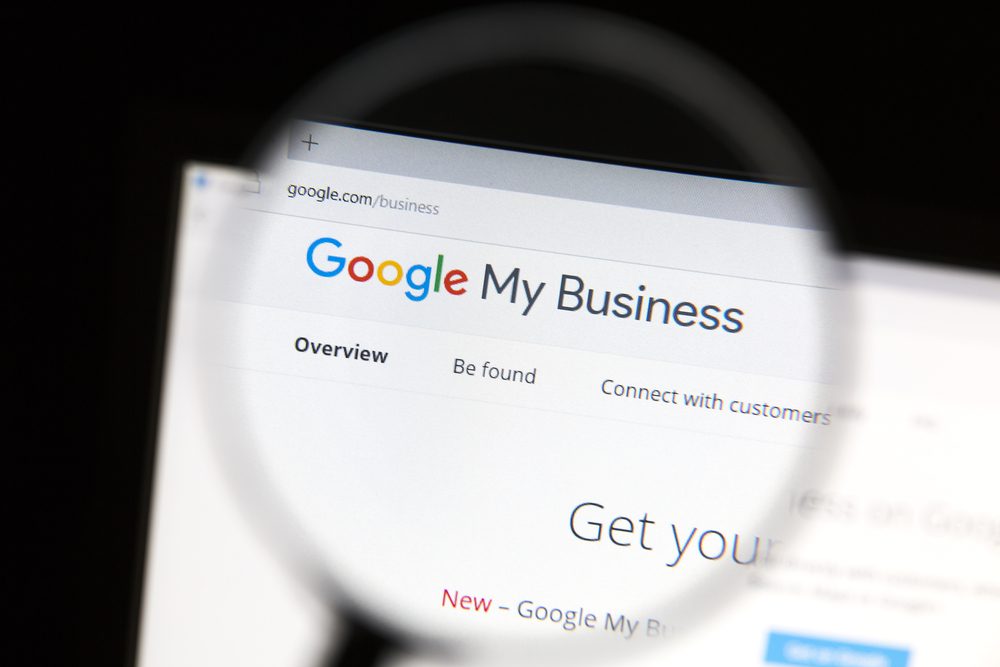
Avoid 7 Top Digital Marketing Errors for San Diego Business
Still not seeing the results you want from your digital marketing campaigns? You could be committing these errors and not know it:
 Overlooking content in digital marketing is a massive mistake because this is a critical component of a successful strategy. Content comprises websites, blogs, social media posts, and email marketing campaigns.
Without quality content, digital marketing efforts would lack substance, and businesses will struggle to engage and retain their audience.
Businesses establish themselves as authorities in their industry by creating content that addresses the audience’s pain points and provides solutions to their problems. They can build trust and credibility with their audience, leading to more conversions and repeat business. Using content to enhance digital marketing efforts involves these strategies:
Overlooking content in digital marketing is a massive mistake because this is a critical component of a successful strategy. Content comprises websites, blogs, social media posts, and email marketing campaigns.
Without quality content, digital marketing efforts would lack substance, and businesses will struggle to engage and retain their audience.
Businesses establish themselves as authorities in their industry by creating content that addresses the audience’s pain points and provides solutions to their problems. They can build trust and credibility with their audience, leading to more conversions and repeat business. Using content to enhance digital marketing efforts involves these strategies:
 Not considering email marketing can be a mistake because it is a highly effective and affordable way to engage with customers, promote products and services, and increase sales, especially for local businesses.
Email marketing is a cost-effective way to reach customers, when compared to traditional advertising, because it reaches a large audience with minimal cost. Businesses can segment their customer list and target specific groups using tailored email messages. This boosts conversion and customer retention.
Email marketing can be a powerful tool for local digital marketing. These tips and tricks can help local businesses use email marketing.
Not considering email marketing can be a mistake because it is a highly effective and affordable way to engage with customers, promote products and services, and increase sales, especially for local businesses.
Email marketing is a cost-effective way to reach customers, when compared to traditional advertising, because it reaches a large audience with minimal cost. Businesses can segment their customer list and target specific groups using tailored email messages. This boosts conversion and customer retention.
Email marketing can be a powerful tool for local digital marketing. These tips and tricks can help local businesses use email marketing.
 Overlooking your Google Business Profile can lead to poor local business engagement. GBP is a free listing on Google Search and Maps. It helps increase online visibility for potential customers searching for products or services in their local area.
Creating an accurate GBP profile can build trust and credibility with potential customers by showing that a business is established, trustworthy, and reliable. Also, GBP is a crucial component of local SEO for small companies, ensuring higher rankings.
A San Diego digital marketing agency uses effective strategies to optimize GBP by
Overlooking your Google Business Profile can lead to poor local business engagement. GBP is a free listing on Google Search and Maps. It helps increase online visibility for potential customers searching for products or services in their local area.
Creating an accurate GBP profile can build trust and credibility with potential customers by showing that a business is established, trustworthy, and reliable. Also, GBP is a crucial component of local SEO for small companies, ensuring higher rankings.
A San Diego digital marketing agency uses effective strategies to optimize GBP by
- Overlooking market analysis
- Believing content is not important
- Not using a mobile app
- Not considering email marketing
- Using only one or two social media platforms
- Forgetting the value of Google Business Profile
- Overlooking NAP consistency
Are you looking for a full-service digital marketing agency? See the DAP difference below!
1. Overlooking Market Analysis
Some businesses are in such a hurry to make a profit that they forget this essential factor: market analysis. Overlooking market analysis risks making business decisions without understanding your customers, competition, and industry. Companies may miss opportunities to develop their products or services without a definite understanding of the target market’s needs and preferences. This can lead to a struggle to effectively market products or services to the relevant customers. If your products or services don’t meet the target market’s needs or preferences, you may struggle to generate sales, leading to lower revenue and profits. Conducting a local market analysis is one of the elements of an excellent digital marketing plan. Taking that action involves several steps:- Define the market, including the population’s size, demographics, and characteristics.
- Identify the target audience and their needs, preferences, and buying habits.
- Understand the competition, including their strengths and weaknesses, products and services, and marketing strategies. Check their websites, social media pages, and online reviews.
- Analyze industry trends, including changes in customer behavior, emerging technologies, and new regulations.
- Conduct a SWOT analysis (Strengths, Weaknesses, Opportunities, Threats) to identify the business’s strengths, weaknesses, and possible threats in the local market.
- Collect data about the market using surveys, interviews, and conduct online research using Google Trends and Google Analytics.
- Analyze the data collected and identify the key insights and trends to help you make informed decisions.
- Implement a marketing strategy informed with this data and track progress using website traffic, social media engagement, and sales metrics.
2. Believing Content is Not Important
 Overlooking content in digital marketing is a massive mistake because this is a critical component of a successful strategy. Content comprises websites, blogs, social media posts, and email marketing campaigns.
Without quality content, digital marketing efforts would lack substance, and businesses will struggle to engage and retain their audience.
Businesses establish themselves as authorities in their industry by creating content that addresses the audience’s pain points and provides solutions to their problems. They can build trust and credibility with their audience, leading to more conversions and repeat business. Using content to enhance digital marketing efforts involves these strategies:
Overlooking content in digital marketing is a massive mistake because this is a critical component of a successful strategy. Content comprises websites, blogs, social media posts, and email marketing campaigns.
Without quality content, digital marketing efforts would lack substance, and businesses will struggle to engage and retain their audience.
Businesses establish themselves as authorities in their industry by creating content that addresses the audience’s pain points and provides solutions to their problems. They can build trust and credibility with their audience, leading to more conversions and repeat business. Using content to enhance digital marketing efforts involves these strategies:
- Identify the target audience, including their pain points and what type of content is most likely to engage them.
- Create valuable content such as blog posts, how-to guides, infographics, and videos that educate, inform, or entertain your audience.
- Optimize content for search engine optimization (SEO) by including relevant keywords, optimizing meta tags, and ensuring content is easily read and shared.
- Promote content on social media, email marketing, and other online channels to increase visibility and reach.
- Encourage the audience to share your content by responding to comments and questions.
- Use local keywords in the content to optimize it for local search queries.
- Showcase local expertise by sharing local news and events, and offer tips specific to the local community.
3. Not Using a Mobile App
A San Diego business that does not have a mobile app is missing out on effective marketing. Mobile apps are becoming increasingly popular among consumers and can help local companies grow. Apps provide a convenient way for customers to interact with local businesses, make purchases, and stay updated with the latest products and services. This increased engagement can lead to higher customer satisfaction and loyalty. Mobile apps offer customers a personalized and seamless experience, allowing them to quickly browse products, place orders, and access loyalty programs or offers. Apps lead to higher conversion rates and increased revenue for local businesses. Here are some techniques for using a mobile app for local digital marketing:- Offer promotions and loyalty programs to incentivize customers and purchases and keep them returning.
- Provide location-based services by using GPS technology. Offer directions to your business or give out promotions when they are near the store.
- Enable direct mobile ordering and payment through the mobile app.
- Push notifications alert customers about new products or services, upcoming events, or special promotions.
- The mobile app collects valuable customer behavior, preferences, and demographic data.
4. Not Considering Email Marketing
 Not considering email marketing can be a mistake because it is a highly effective and affordable way to engage with customers, promote products and services, and increase sales, especially for local businesses.
Email marketing is a cost-effective way to reach customers, when compared to traditional advertising, because it reaches a large audience with minimal cost. Businesses can segment their customer list and target specific groups using tailored email messages. This boosts conversion and customer retention.
Email marketing can be a powerful tool for local digital marketing. These tips and tricks can help local businesses use email marketing.
Not considering email marketing can be a mistake because it is a highly effective and affordable way to engage with customers, promote products and services, and increase sales, especially for local businesses.
Email marketing is a cost-effective way to reach customers, when compared to traditional advertising, because it reaches a large audience with minimal cost. Businesses can segment their customer list and target specific groups using tailored email messages. This boosts conversion and customer retention.
Email marketing can be a powerful tool for local digital marketing. These tips and tricks can help local businesses use email marketing.
- Build a high-quality email list through your website, social media, and other digital channels.
- Segment the email list into groups based on demographics, behaviors, interests, or other relevant factors to send targeted and personalized messages to each group.
- Provide valuable content that is relevant to email subscribers, such as industry news, tips, product updates, or special offers.
- Use catchy subject lines to entice recipients to open your emails. Avoid using spammy or misleading subject lines.
- Include a clear call-to-action (CTA) to encourage recipients to take action and engage with your business.
- Optimize for mobile using a responsive design. Keep content concise and easy to read on smaller screens.
5. Using Only One or Two Social Media Platforms
Overlooking multiple social media platforms limits the ability to reach a wider audience and engage with potential customers. Each social media platform has its own unique audience and user demographics. Using multiple platforms allows businesses to engage a diverse audience, increasing their chances of finding potential customers. By sharing content across multiple platforms, businesses can increase their reach and exposure, leading to more site traffic and sales. With multiple social media platforms, companies can provide customer service on the channels where their customers are most active. Using multiple social media platforms can be challenging, but these strategies can make it possible.- Develop a social media marketing plan to outline each platform’s goals, target audience, content strategy, and posting schedule.
- Use social media management tools such as Hootsuite, Buffer, or Sprout Social to schedule and publish posts on multiple platforms, saving time and effort.
- Repurpose content across platforms by adapting each to fit the platform’s unique features and audience.
- Encourage customers to create and share postings about your business on social media by running contests or offering incentives.
- Cross-promote across platforms by including links or icons in the email signature, website, and other digital channels.
- Respond to comments, reviews, and feedback to build a positive reputation on social media.
6. Forgetting the Value of Google Business Profile
 Overlooking your Google Business Profile can lead to poor local business engagement. GBP is a free listing on Google Search and Maps. It helps increase online visibility for potential customers searching for products or services in their local area.
Creating an accurate GBP profile can build trust and credibility with potential customers by showing that a business is established, trustworthy, and reliable. Also, GBP is a crucial component of local SEO for small companies, ensuring higher rankings.
A San Diego digital marketing agency uses effective strategies to optimize GBP by
Overlooking your Google Business Profile can lead to poor local business engagement. GBP is a free listing on Google Search and Maps. It helps increase online visibility for potential customers searching for products or services in their local area.
Creating an accurate GBP profile can build trust and credibility with potential customers by showing that a business is established, trustworthy, and reliable. Also, GBP is a crucial component of local SEO for small companies, ensuring higher rankings.
A San Diego digital marketing agency uses effective strategies to optimize GBP by
- Creating a complete and accurate profile, being especially careful to observe consistency for the business location, hours of operation, services, photos, and contact information.
- Encouraging customer reviews to boost credibility and attract more customers.
- Adding local keywords in the GBP business description, selecting the correct categories, and adding location-specific information.
- Using Google Posts to share news, promotions, or events directly on the GBP profile.
7. Overlooking NAP Consistency
It is easy to overlook the business name, address, and phone number (NAP) if your business is listed in multiple places online. However, this can negatively affect online visibility, credibility, and customer experience. Outdated or inaccurate NAP information can mislead customers and lead them to the wrong location or contact information. Inconsistent NAP information across online directories, social media platforms, and websites can harm a business’s local SEO efforts and affect the customer experience. Overlooking NAP consistency also leads to negative customer feedback and reviews. Here are ways businesses can ensure their NAP is consistent across all directory sites:- Create a master list of the business’s NAP information.
- Research directory sites where the business is listed.
- Verify and claim business listings on all directory sites for more control over the information displayed on these sites.
- Update NAP information. Use the exact spelling, address format, and phone number for each listing.
- Monitor listings to ensure that they are accurate and up-to-date.
- Use a NAP citation service to help manage and update the business’s NAP information across all directory sites.
Summing Up
Avoid these digital marketing errors to create an effective campaign. Never overlook market analysis; create relevant and fresh content; use a mobile app; and consider email marketing. Also, use multiple social media platforms to meet customers, optimize GBP, and ensure NAP consistency on all directory sites. Partner with a San Diego digital marketing agency to prevent these mistakes and improve the focus on your business. Call Digital Authority Partners for expert local digital marketing help.Want To Meet Our Expert Team?
Book a meeting directly here



